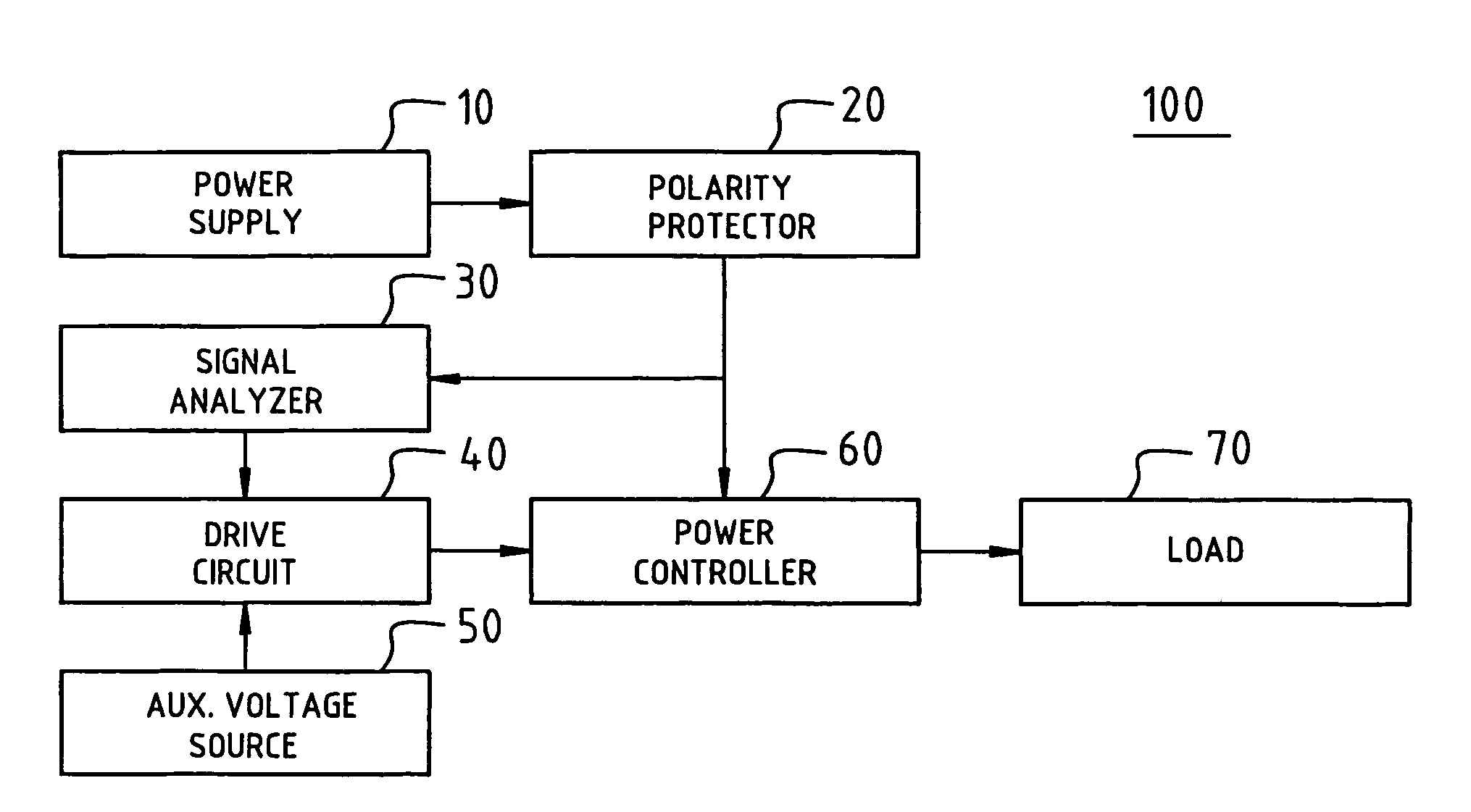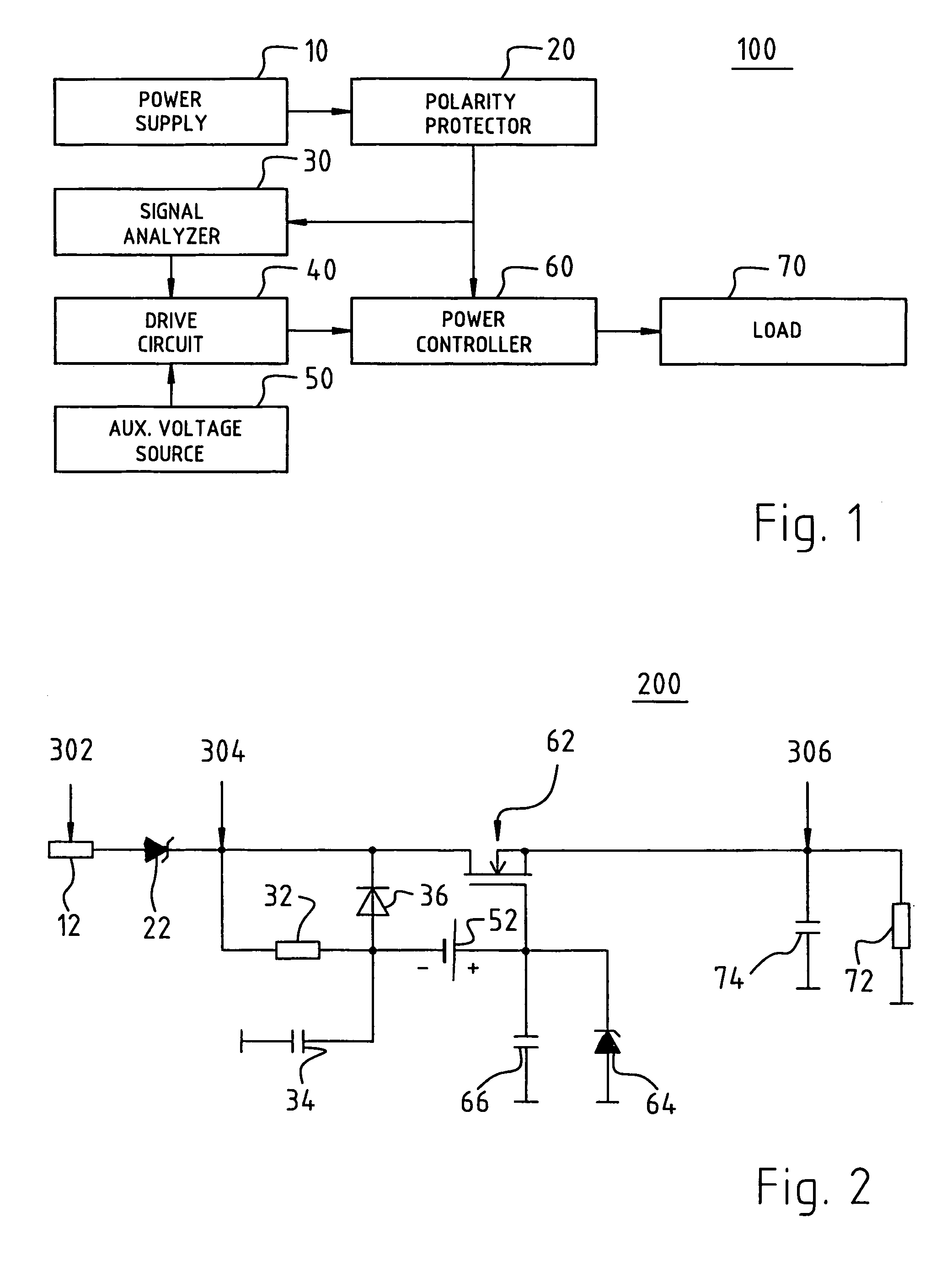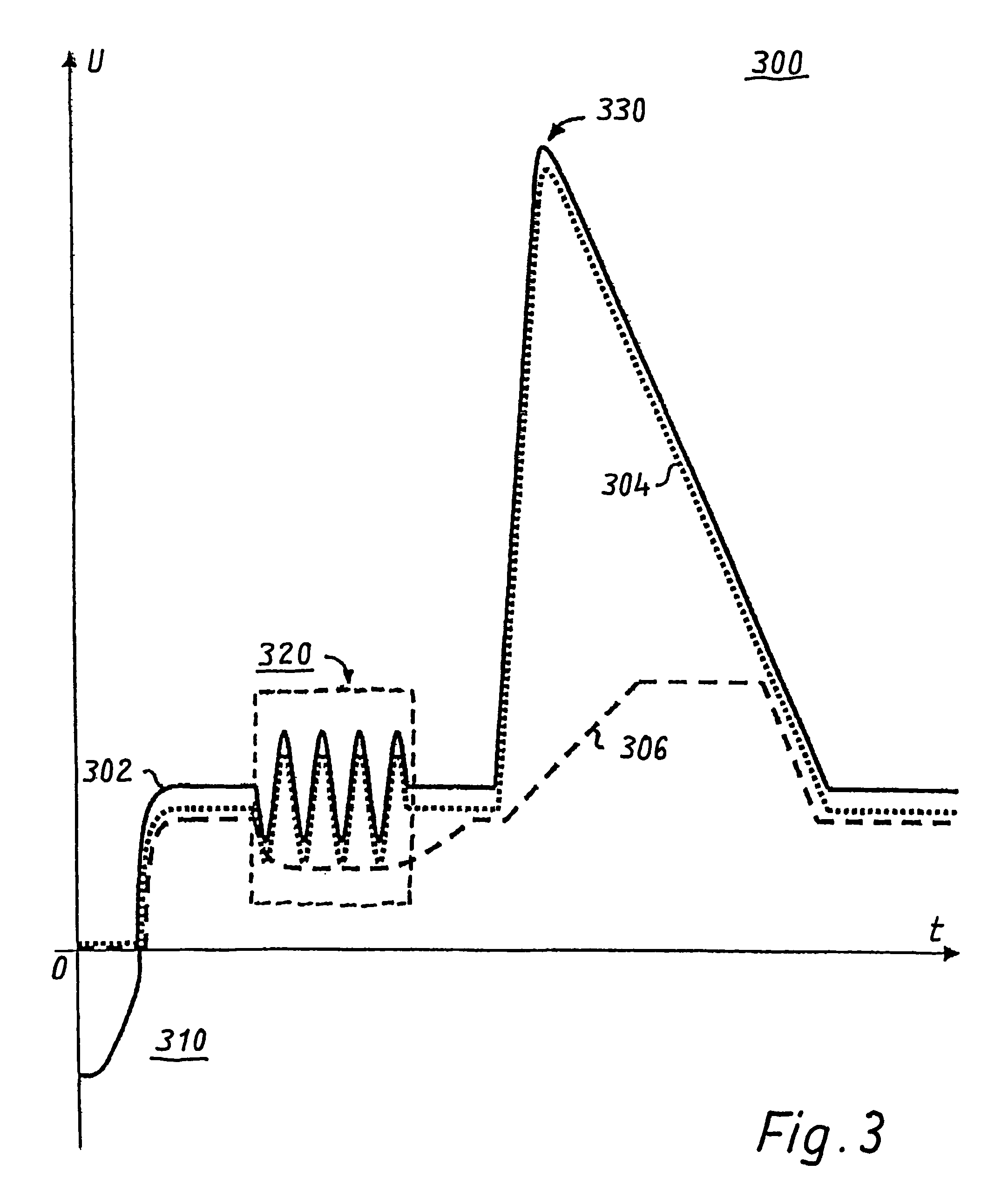Protective circuit for reducing electrical disturbances during operation of a DC motor
a protection circuit and dc motor technology, applied in the direction of commutation monitoring, multiple dynamo-electric motor speed regulation, dynamo-motor starters, etc., can solve the problems of only limited utility, complicated use, and electrical interference or disturbances that affect the control of dc motors, so as to reduce electrical disturbances and increase the resistance of the series transistor
- Summary
- Abstract
- Description
- Claims
- Application Information
AI Technical Summary
Benefits of technology
Problems solved by technology
Method used
Image
Examples
first embodiment
[0021]FIG. 2 is a highly simplified circuit diagram of an illustrative protective circuit 200 for reducing electrical interference, according to the present invention. The illustrative protective circuit 200 comprises a supply voltage source 12 and a load 72, shown schematically as a resistor. A positive line of supply voltage source 12 is connected to the anode side of a diode 22. The output signal of diode 22 is delivered from the cathode side of diode 22 through a resistor 32 to the negative pole of an auxiliary voltage source 52. The output signal of diode 22 is furthermore delivered to the cathode side of a diode 36 and to the drain region of a series transistor (MOSFET) 62. The anode side of diode 36 and the negative pole of auxiliary voltage source 52 are connected to ground via a storage capacitor 34. The positive pole of the auxiliary voltage source is connected to the gate of series transistor 62. The positive pole of auxiliary voltage source 52 is furthermore connected to...
second embodiment
[0032]FIG. 4 is a highly simplified circuit diagram of an illustrative protective circuit 400 for reducing electrical interference, according to the present invention. In protective circuit 400, a diode circuit in which, for example, four diodes 54, 55, 56, and 57 are connected in series is arranged between capacitor 34 and the gate of series transistor 62. A resistor is arranged, in parallel with the four series-connected diodes 54, 55, 56, and 57, between resistor 32 and the gate of series transistor 62. Protective circuit 400 furthermore comprises a voltage source 82 that is connected via a current limiting resistor 84 to the anode side of a diode 86. The cathode side of diode 86 is connected on the one hand via a capacitor 87 to ground, and on the other hand via a resistor 88 to the cathode side of Zener diode 64. The circuit arrangement otherwise corresponds to the one shown in FIG. 2.
[0033]In protective circuit 400, the parallel circuit of the four diodes 54, 55, 56 and 57 wit...
PUM
 Login to View More
Login to View More Abstract
Description
Claims
Application Information
 Login to View More
Login to View More - R&D
- Intellectual Property
- Life Sciences
- Materials
- Tech Scout
- Unparalleled Data Quality
- Higher Quality Content
- 60% Fewer Hallucinations
Browse by: Latest US Patents, China's latest patents, Technical Efficacy Thesaurus, Application Domain, Technology Topic, Popular Technical Reports.
© 2025 PatSnap. All rights reserved.Legal|Privacy policy|Modern Slavery Act Transparency Statement|Sitemap|About US| Contact US: help@patsnap.com



